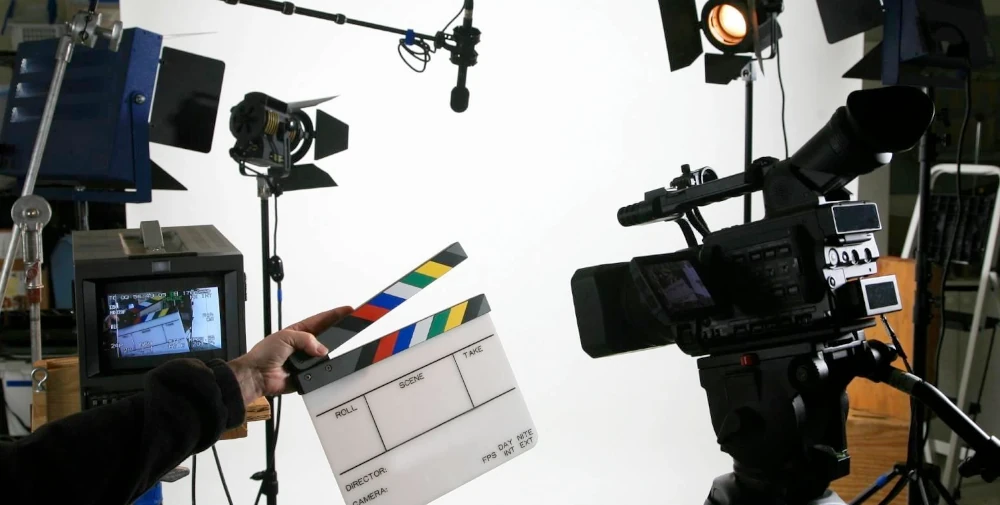
When did digital filmmaking start?
A Trip Across the Digital Revolution in Film
Over the last several years, the landscape of filmmaking has changed dramatically. The transition from conventional celluloid film to digital filmmaking is among the most innovative changes in the sector. This change occurred over technical developments, artistic experimentation, and financial concerns rather than overnight. But just when did filmmaking origins begin, and how did it change the economics and artistry of movies?
This blog will look at the beginnings of digital filmmaking, important turning points in its evolution, its effects on the business, and what the future holds for both consumers and creators.
The Early Days: The Emergence of Digital Images
Understanding digital filmmaking requires first appreciating the technology that enabled it: digital picture capture. Digital imaging is the capture of moving pictures using digital sensors instead of conventional photographic film. Digital imaging first emerged in the 1960s and 1970s when scientists and the military mostly applied it for satellite imaging and space exploration.
Designed at Bell Labs by Willard Boyle and George E. Smith in 1969, the Charge-Coupled Device (CCD) was among the first technologies to allow the gathering of digital images. Originally applied for scientific purposes, this technology made digital photography possible and finally helped to enable digital filmmaking.
Early Digital Cinema Experiments in the 1980s
Early attempts in digital video production emerged in the 1980s. Digital video was essentially used in television, commercials, and corporate videos at this point; its quality was far worse than that of film. For theatrical release, filmmakers still mostly depended on conventional 35mm and 16mm films.
Still, the late 1980s brought modest improvement. Like Sony’s D1 (introduced in 1986), the first commercially sold digital video recorders offered uncompressed digital recording formats. Though costly and heavyweight, these technologies suggested the possibilities of digital filmmaking.
Early digital images in film are most famously found in James Cameron’s “The Abyss” (1989), with its innovative visual effects featuring the first computer-generated (CG) water creature. Although the movie was shot on conventional film stock, the addition of digital visual effects marked the blending of the old and new worlds.
The 1990s: Emerging Digital Film Production
As directors started experimenting with digital cameras and editing systems in the 1990s, one can regard these years as the real dawn of digital filmmaking. Television and independent films started using digital video cameras, including Sony’s D2 and subsequently the D3 and D5, more widely. These technologies also paved the way for documentary filmmaking, which greatly benefitted from digital tools due to the lower costs and flexibility.
Key 1990s milestones: non-linear editing (NLE)
Avid first presented its Media Composer system in 1991, transforming the post-production process. Computers allowed directors and editors to edit movies without actually cutting film reels. This was among the first indicators of mainstream film digital processes.
1999 saw “Star Wars: Episode I – The Phantom Menace”:
Though the movie was shot on 35mm, George Lucas, a forerunner in digital technology, used digital tools heavily during post-production. Seeing the possibilities of digital production, Lucas declared his intention to film the next Star Wars totally with digital cameras.
Often credited as the first feature film shot, edited, and distributed totally using consumer-level digital video technology, “The Last Broadcast” (1998), though it had a limited release, highlighted how easily independent producers could access digital filmmaking.
Digital Projection:
Using Texas Instruments’ DLP (Digital Light Processing) technology, Lucasfilm’s “The Phantom Menace” became the first big motion picture to be shown digitally in a few chosen theaters in 1999. For film projectors, this signaled the beginning of their end.
The Digital Revolution Turns Mainstream in the 2000s
For many directors by the early 2000s, digital filmmaking was no more of an experimental process but rather a practical, even better choice. High-definition (HD) digital cameras let filmmakers record images that approach the resolution and color depth of 35mm film.
Notable events in the 2000s: “Star Wars: Episode II – Attack of the Clones” (2002):
Specifically, the Sony HDW-F900, developed with George Lucas and Sony, became the first significant Hollywood film shot totally on digital cameras. The popularity of this movie proved that digital technology could now challenge film for big studio projects.
Digital Cinematography Advancements:
Offering 4K resolution and beyond, digital cameras, including the ARRI Alexa (2010) and the RED One (2007), emerged in the 2000s. With previous digital formats, these cameras let directors create a cinematic look that was once impossible.
With studios sending films to theatres using digital cinema packages (DCPs), the whole business started moving to digital distribution, therefore removing the need for expensive film prints.
Beyond the 2010s: Digital Dominance
- Digital filmmaking has firmly seized the field by the 2010s. Nearly all Hollywood movies were filmed using digital cameras; most cinemas across the globe had switched to digital projection. For their big films, even venerable filmmakers as Martin Scorsese, Ridley Scott, and James Cameron embraced digital photography.
- Rising streaming services like Netflix, Amazon Prime, and Disney+ hastened the digital revolution by giving material digitally shot and delivered to immediately reach worldwide viewers.
- Digital filmmaking is constantly changing nowadays as cameras provide 8K and greater resolutions, virtual production technologies like LED volume stages (shown in “The Mandalorian”), and AI-assisted editing tools push the envelope of what is feasible in narrative.
Changing the Industry with Digital Filmmaking
The introduction of digital filmmaking has changed the sector in many different ways:
- Filmmaking has become more approachable than it had ever been. Affordable digital cameras and editing tools let independent filmmakers, students, and content producers create high-quality films free from the massive expenses connected with film stock and processing. If you’re looking to start a career in filmmaking, digital filmmaking offers a great entry point.
- Digital production and distribution cut costs dramatically, freeing studios to save millions on printing, transportation, and processing.
- Digital technology has made it easier and flexible for directors to explore visual effects, color grading, and editing.
- By removing the need for chemical film processing and hence lowering waste, the move to digital lessened the environmental effect of the filmmaking process.

Five FAQs Regarding Digital Filmmaking
1. When did widespread digital filmmaking first take hold?
Early in the 2000s, especially with the popularity of “Star Wars: Episode II – Attack of the Clones” (2002), the first significant film filmed totally utilizing digital cameras began to garner general acclaim.
2. Which movie shoot started totally on digital video?
Although there were previous independent studies, “Star Wars: Episode II – Attack of the Clones” (2002) is generally acknowledged as the first big Hollywood picture filmed totally running on digital cameras. Smaller movies like “The Last Broadcast” (1998) were leaders in utilizing consumer digital video, nevertheless.
3. In what ways may digital filmmaking surpass conventional film?
Lower production and distribution costs, simpler post-production processes, greater editing and visual effects flexibility, immediate playback, and less environmental impact are just a few of the advantages digital filmmaking offers.
4. Does conventional film still find usage today?
Indeed, even if digital filmmaking rules, certain directors—including Christopher Nolan and Quentin Tarantino—still appreciate shooting on film for its visual appeal. These kinds of initiatives, nevertheless, are increasingly the exception rather than the norm.
5. Which technology will define digital filmmaking going forward?
The future of digital filmmaking is being shaped by emerging technologies, including virtual production (e.g., LED volume stages), 8K cameras, artificial intelligence-assisted editing, and augmented reality (AR), thereby transforming production into more immersive, efficient, and visually spectacular.
Conclusion
Since its first tests, digital filmmaking has advanced greatly. From grainy 1980s digital movies to the amazing, high-definition spectacles of today, the digital revolution in cinema has democratized narrative, increased creative possibilities, and radically altered our consumption of visual material.
Filmmakers and viewers both should expect an interesting future where the lines between the real and digital worlds will keep blurring as technology develops.

